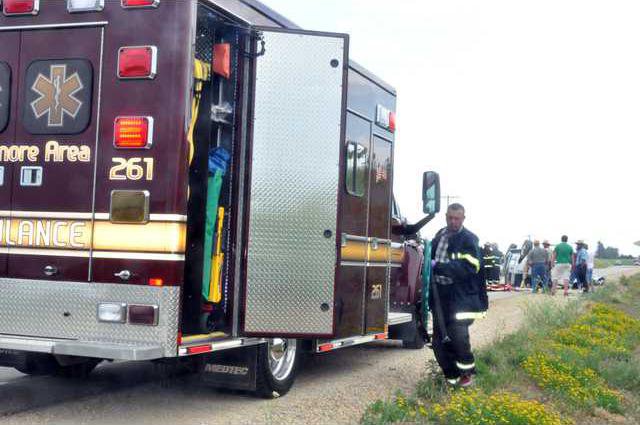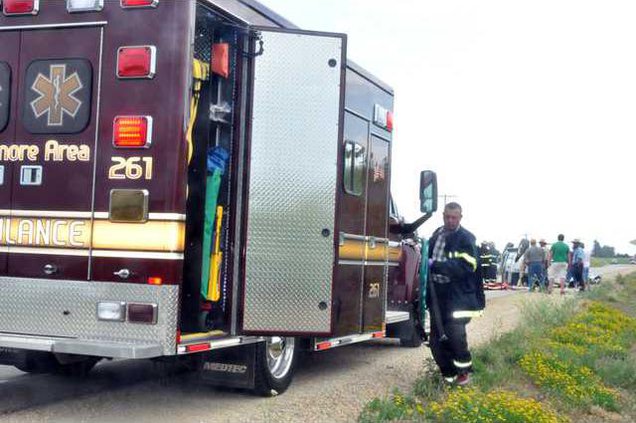Although it is very rewarding, being a part of a volunteer rescue squad can be difficult. But as the saying goes, even the tough jobs need someone to do them. Will that somebody be you?
The Fennimore Emergency Medical Services (EMS) squad is in search of more members to add to its service. Due to the retirement of several members and the increased workload on current members, the rescue squad is in dire need of more volunteers.
“It has always been a small group. It has always been a half-dozen or maybe 10 of the folks that are really active and taking lots of calls,” Fennimore EMS Chief Rick Kreul said. “But it is just getting harder, there is just not that half-dozen people that have that much free time to do that anymore.
“So we are trying to round up some more folks so that everybody can do a little bit and not have to rely on that handful of people to do so much.”
CPR class begins Jan. 9 and EMT class begins Jan. 14. The Fennimore EMS will pay for all costs related to training and will also pay all future expenses to maintain the license of each member.
All gear is provided by the rescue squad to its members. There is also a class – shorter than traditional training – offered to registered nurses who wish to serve as EMTs.
Kreul joined the Fennimore EMS in 1994, when the required training for rescue squad personnel was far different than it is today.
“It has changed a lot since I got on. The service here actually was doing some things that were at that time ‘advanced skills,’” he recalled. “Once I completed the main course there were three additional eight or 12 hour courses that I had to take to get up to speed with everybody else.
“Now all those skills are part of the basic class. There has been a whole bunch more stuff that has been added to the basic class.”
When Kreul participated in training, he estimates the number of hours required was in the neighborhood of 100 to 130. The number of required hours has since increased to 154 and recently increased to 180.
“It is fantastic that people are getting trained to do more and the folks in the field have the ability to do even more,” Kreul said. “But there has got to be a way to make this easier for folks that are volunteering.”
In the past, the rescue squad roster included several members with children who were high school students or older. Today, it is not uncommon for members to have children living at home.
“That has probably been the thing that has complicated our lives now is a lot of the folks that are willing to donate and want to take part in this have families at home to deal with on top of it,” Kreul said.
There are currently nine fully licensed members of the Fennimore EMS and close to 20 members total. The members who are not fully licensed are in various stages of training and testing.
“If we could double what we have, it would help a lot,” Kreul said. “We are in a lot of tight spots with the staff we got and people are making some awful great sacrifices to make sure the services are still provided that they would rather not have to do.
“And I think it has cost us some good members over the years because they want to and they try and they care so much, they get burned out.”
Kreul readily admits being an EMS member is not for everyone, due to the intense nature of the position.
“It is very trying, not only on time, but you see horrible things,” he said. “Over the last 20 years I’ve been part of so many nasty things that give you nightmares and that takes a toll on folks.
“We work real hard to support each other. There is a county-wide critical incident stress management team that we contact through the sheriff’s department. It is a marvelous program.”
While the number of Fennimore EMS members has decreased, the number of emergency calls has increased.
“We normally run between 260 and 280 calls a year,” Kreul said. “That includes standby for football games and standing by at fire scenes for the fire department.
“Having that second squad and having the ability to have one tied up somewhere on a standby makes it a lot easier.”
The dilemma of depleted rescue squad rosters is not unique to Fennimore.
“There are some squads that are having better luck keeping people, there are some that aren’t,” Kreul said. “There are some that are in worse shape than us, but it is everywhere.
“Everybody is having trouble all around right now. Time is an issue. It is a big issue for a lot of folks.”
As intense as the position itself is the training required prior to certification. The training is held in four-hour increments, twice a week, for a semester.
What can people expect in training?
“A lot of it is about the devices that we use and getting people out of car wrecks,” Kreul explained. “It is also learning about injured people and dealing with them, and the medications you can give to ill people.
“After that there is state testing and then national testing that you have to get through to get a license administered. It is a lot. We have had a lot of folks work really hard at it and then struggle with the testing.”
Kreul has spoken with state representatives on multiple occasions regarding the amount of testing being asked of individuals who will become volunteer personnel.
“I don’t get a lot of reception at the state level when I complain to them. Teaching all the skills is fantastic, but there has got to be a way to do it that is more accommodating,” he said. “I have struggled to try to find ways to make the testing easier and nobody seems interested.
“They just keep adding more and more responsibilities, which is great for patient care, but unfortunately I think we are reaching a breaking point where they are going to drive us small volunteer services right out of business.”
Following training and state testing, potential EMS personnel are also required to pass a federal test to become a member of a national registry.
“It was almost five years ago we first started talking about having issues with staffing crews at the county meetings,” Kreul said. “It hasn’t gotten any better, if anything, it is worse.
“It is just so tough for people to have that kind of time and get through the class.”
Kreul knows of some rescue squads that offer a small stipend or money for taking a call, he also knows several do not.
“My thoughts have always been the funds that we have, it is nice to be able to purchase quality equipment when it needs to be purchased,” he said. “I would much rather have some new equipment than have $300 or so if it added up to that.”
Those interested in becoming a member of the Fennimore EMS can contact Kreul or any other member of the rescue squad.
“Get a hold of any one of the members and we can sit and talk about it more,” he said. “It is definitely not something for everybody.
“The rewarding times greatly outweigh the bad times.”
“Being an EMT can be a very rewarding part of a person’s life,” said Fennimore EMS member Susan Childs. “There are not many other ways to have such a wonderful impact on the life of another individual or their family.”
In recalling the rewarding times, Kreul shared a story in which he responded to a call of a man with chest pains two years ago who later had a heart attack and was revived by Fennimore EMS personnel.
“For me, that was just one of those things that just makes up for it all,” he said. “That was a very happy day. He is still kicking to this day.
“That makes up for a lot, when you see the people that you do make a difference for it helps a lot.”
Fennimore EMS in need of volunteers





